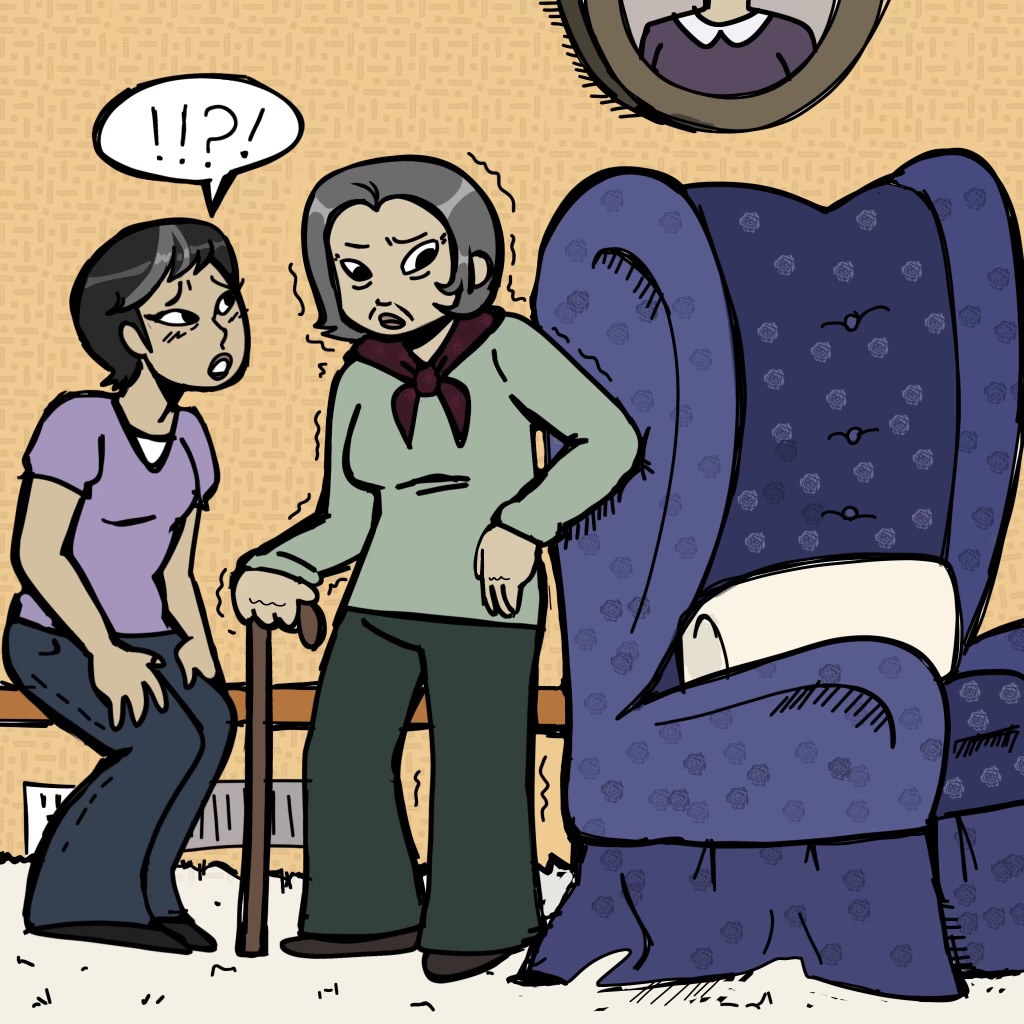We are pleased to bring you a blog from Capella Design. Capella Design creates beautiful furniture and accessories that elevate the style and function of your home. They are on a mission to re-imagine home mobility so that everyone can enjoy a more functional space. Please visit www.designbycapella.com for more information and a look at their products.
After the holidays, many of us notice subtle changes in our loved ones’ homes that may signal accessibility needs. Learn how to identify signs like mobility challenges or changes in routines, reflect on your observations, and start meaningful conversations with the ACT model—Assess, Collaborate, Trust.
Spotting Challenges: Seeing what others might not
After the joy and connection of family gatherings, many of us leave with warm memories—and sometimes, a new awareness of the challenges our loved ones may face in their homes. For those who live with or see these friends and family members every day, it can be harder to notice gradual changes in mobility or behavior because familiarity often masks these shifts. We become accustomed to small adjustments over time, like someone avoiding stairs or leaning on counters.
But when less frequent visitors come into the home, like over the holidays, it can be easier to see what others don’t—adjustments that signal a need for support. Taking action, even if it’s difficult, is a sign of care.
Common Signs of Accessibility Needs
Recognizing accessibility challenges starts with observing subtle shifts in how your loved ones move through their homes and complete everyday tasks. Occupational therapists often highlight these as early indicators of mobility or environmental barriers that may need addressing. Here are a few signs they look for:
- Reliance on furniture or walls for support: A loved one subtly leaning on tables, countertops, or walls to steady themselves could indicate balance or mobility challenges.
- Hesitation or avoidance of certain areas: Skipping upstairs bedrooms, avoiding outdoor steps, or limiting movement to specific rooms may reflect difficulties navigating their environment.
- Fatigue during simple tasks: Increased rest periods while cooking, cleaning, or walking between rooms might point to reduced stamina or joint pain.
- Rearranged spaces or unused rooms: A living room modified to open pathways or an abandoned favorite chair may indicate efforts to adapt to physical limitations.
- Difficulty using household items: Struggling to open jars, reach shelves, or use everyday appliances may highlight dexterity issues or barriers.
- Changes in cleanliness or maintenance: A previously well-maintained home that now shows signs of neglect, like cluttered pathways or expired food, may point to challenges in managing daily routines.
- Physical signs of strain or discomfort: Frequent rubbing of joints, difficulty sitting or standing, or visible signs of pain during movement could indicate physical challenges.
Noticing changes in how your loved ones navigate their homes doesn’t always mean there’s an immediate problem to solve. Everyone moves through their space in their own way, and these shifts might simply reflect personal habits or preferences. However, paying attention to these observations is an act of care. Taking time to reflect on what you’ve noticed can provide clarity and direction.
Preparing the Discussion: The ACT Model
When you have a concern about a loved one, it can be hard to figure out what to do next. After speaking to caregivers and occupational therapists, we learned that action begins with the ACT Steps: Assess, Collaborate, Trust.
Assess: Reflect on what you’ve observed. Write down the changes you noticed, no matter how small. These details create a clear picture of potential issues..
Here are a few questions to guide you:
- What movements or behaviors stood out the most?
- What actions seemed difficult to perform?
- What frustrations did you see?
Organizing what you’ve observed can help you better better understand if there is an issue, and the urgency.
Collaborate: Reach out to family members, friends, or neighbors who may spend more time with your loved one. Have they observed similar changes or have concerns of their own? Collaboration helps build a fuller understanding of the situation and ensures your next steps are well-informed.
(Build) Trust: Many people are reluctant to hear feedback about mobility challenges, and they may feel defensive or even threatened by the topic. Use what you’ve gathered and create a plan to start an open, supportive dialogue. Focus on how to bring up your observations in a way that feels caring and collaborative, emphasizing that the goal is to help, not criticize. Building trust ensures that your loved one feels understood and is more likely to engage in meaningful discussions about potential next steps.
By noticing changes and addressing them thoughtfully, you show your loved ones that their comfort and independence matters. It’s not about fixing what’s wrong—it’s about honoring their needs and creating a home where they feel supported and seen.
And while it may feel uncomfortable, taking action to support accessibility is, at its core, an incredible act of care.
Looking Ahead: Starting the Conversation
Reflecting on what you’ve observed is an important first step, but meaningful change begins with a conversation. In another post, we’ll explore how to approach these discussions with care, empathy, and practical tools to ensure they feel collaborative and empowering. Together, we can turn observations into action, creating homes that honor both style and independence.
Visit Capella Design at www.designbycapella.com
Visit us at www.designbycapella.com.





